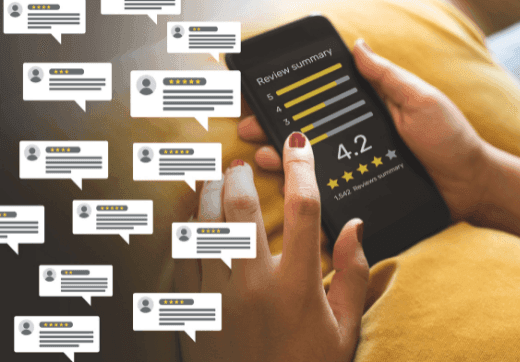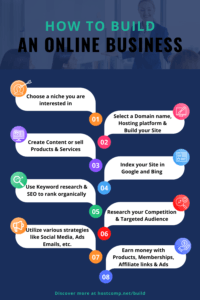Affiliate programs are a well-known method to monetize a website and earn online income. It offers long-term potential if you are willing to take the time to build a brand and grow a successful affiliate strategy.
But what is an affiliate program? And how to find affiliate programs and choose the right one?
What are Affiliate Programs?
With an affiliate link, you can promote a product or service from a company(Merchant). If you can buy it online, the chances you can promote it through affiliate programs or affiliate networks are pretty high.
Every time someone clicks your affiliate link and buys a product, it will be tracked. This way, the company pays you a commission if someone purchases in a certain time period through your link. The link doesn´t affect the customer; there are no extra costs, or he isn´t missing anything. But sometimes, an affiliate program offer gives a bonus or coupon to make the offer more appealing, which benefits both you and the merchant.
The affiliate commission is a percentage of the purchase price; it can be anything from 1-70% or even more. The goal is to drive traffic to your affiliate link; the more people see your link, the higher the chances of someone purchasing through your link. To get the traffic, you either need a Website where you write content and reviews or make a product comparison. The website method works best if you want to build a brand and make a long-term profit through affiliate marketing.
You can also promote affiliate links through social media on forums or do online advertising. No matter what you choose, you need a good strategy and a way to get traffic to your promotion.
How to find Affiliate Programs for your niche?
When you have chosen a niche and may already build a website with content and know where you want to integrate your affiliate link. Then you start searching for an affiliate program that is relevant to your niche. So, where can you find a quality affiliate program?
1. Search on Google or Bing
An easy method to discover affiliate promotion in your niche. You just need to search for ’affiliate marketing program’’ + ‘’your niche’’, or for ‘’affiliate program’’ + ‘’the specific product you want to promote. It most likely will show you many programs that are fit for your topic.
If you want an affiliate link from a specific company, you can add the company’s name + “affiliate program.” Sometimes you get a result right away, but if not, you can also try searching for a “partner program’’, “referral program,” or ‘’associates program’’. And if you didn´t find anything, look at the bottom of the company’s website. You may discover it there.
When you have already established a brand, you can also contact the company directly if you can promote their product or service.
2. From a competition
You may already have promoted a particular product; finding a similar competing product is a good idea. This way, you can make a comparison when they have similar functionalities. A comparison article can bring your audience a lot of value and help them decide between multiple products.
Research a website with similar content or in the same niche as you. On a competition website, you can often find products you can promote, so making a list is a good idea. If you click on a link from a competitor, look out for an affiliate tracking id often at the end of a link, something like “?id=34563”. When you find this is most likely an affiliate link.
3. Using the Affiliate Program Search
Sometimes it can be hard to find a good affiliate promotion. This is why the affiliate program search on the platform wealthy affiliate is very useful. You can use different filters, select from various categories, and search for keywords and niches.
Over 10000 affiliate opportunities, you can find in the affiliate program search. It gives you enough products and services you can promote and earn money with.
Tips for choosing the right affiliate program
Selecting a quality affiliate program seems challenging, but with the following tips, you get to know what you should look for.
Trying the product
It can be a good idea to try out the product for yourself in advance. This will help you become familiar with the offer, and you will know if it will fit your website. You can also write better reviews if you know the quality and features of the product.
Fits within your niche
A product you choose should be related to your niche if you have a blog. Your visitor most likely won´t buy it when it doesn´t fit the niche you write about. So try to search for something similar or related; for example, if your blog is about fitness and training, you can also integrate healthy cookbooks as a promotion.
Liked by your target audience
If you know what your audience likes, it can be very useful to successfully market products. You have to understand who your target audience is, what age interests gender, and where they are from. If you have a blog, you may find your targeted audience in your analytics. This can also be seen if you already promote affiliate offers in your niche because a program maybe has tracked analytics integrated.
Even when you don´t know your target audience, you should study your competitors to see what is popular. It can help to find the right audience, as these people are more likely to buy from your link.
Commissions and high prices of products
When you find an affiliate product, you need to check how high the commission is, as you don´t want to promote a product that isn´t paying much. If you have to decide between a high-priced product and a low product, it is a good idea to research both.
A high tier may get lesser sales generated than a low-tier product. For example, if you sell product A 25 times with a 1% commission and product b once with a 10%. Most likely, product A will earn you more money.
You need to choose an offer that can solve the problem your audience is experiencing, which can also be the one with a higher commission. But having a wide range of products and different prices is a good idea. Some may buy the more expensive one because they think it has more features and may be better quality.
Upsells offers
Sometimes a company sells additional packages and features after a customer purchases a product. If the buyer takes advantage of these offers, it can increase your commission.
Quality
A product you promote should have good reviews and not a high return rate. As you want to find something that your customers would like that will help you get long-term affiliate commissions even for other products you promote.
Merchant Support and Reputation
It can make a big difference in choosing a company that offers good support; it will not only help your audience but also be a sign of a quality product.
So choose a merchant with a good reputation and is long-established, which means you can find good reviews for the company on the affiliate platform or a site like Trustpilot.
You can also check conversions metrics that show how many clicks a product needs and that someone buys it. For a newer company, it maybe is a good idea to wait some time to know if the offer would be a good promotion.
Conclusion
When you invest your time and research, you can find many products and services for which you can earn a good commission. The better you target and the more traffic you gain, the higher your profit will be. If you need help becoming an affiliate marketer promoting affiliate products and want to learn how to build a website, you can check out the online marketing tools that offer great online courses and tools to earn money with affiliate programs.
FAQ
What are affiliate programs?
Affiliate programs are marketing programs in which an advertiser commissions affiliates to promote their products or services.
How does affiliate marketing work?
As an affiliate marketer, you promote the products or services of a company on your website or blog. When someone clicks on your unique affiliate link and makes a purchase, you earn a commission.
What are some good affiliate programs to join?
Some of the best affiliate programs to join are Amazon Associates, SEMrush’s affiliate program, and companies with affiliate programs that pay high commissions.
How do I find the best affiliate programs for my niche?
To find the best affiliate programs for your niche, you can search for affiliate program directories, research affiliate websites, and networks, or reach out to potential affiliate partners directly.
What is the best way to find high-paying affiliate programs?
The best way to find high-paying affiliate programs is to search for affiliate programs that pay high commissions, such as those in the marketing platform or email marketing, or search for top affiliate programs online.
How do I become a new affiliate?
To become a new affiliate, you need to sign up for an affiliate program, create an account, and start promoting the company’s products or services on your website or blog.
What is an affiliate partner or manager?
An affiliate partner or manager is the person or team responsible for managing the relationships between affiliates and the company offering the affiliate program.
Can I promote products from multiple affiliate programs on my website?
Yes, you can promote products from multiple affiliate programs on your website or blog. However, choosing programs and products that align with your niche and target audience is important.
Are there any affiliate sites that specialize in finding the best affiliate programs?
Yes, some affiliate sites specialize in helping you find the best affiliate programs for your niche or industry, such as High Paying Affiliate Programs and Affiliate Marketing Dude.
What is the Amazon Associate program?
The Amazon Associate program is a popular affiliate program operated by Amazon that allows affiliates to promote Amazon products and earn a commission on sales.
What is an affiliate marketing program?
An affiliate marketing program is a partnership between a company and an affiliate where the affiliate promotes its products or services in exchange for a commission on any sales made through its unique affiliate link.
How can I find the best affiliate marketing programs?
One way to find the best affiliate marketing programs is to search for affiliate networks or directories, such as Commission Junction or ShareASale, that list various programs for different niches. You can also research companies that have affiliate programs in your niche and sign up as an affiliate directly with them.
What is the best way to find affiliate programs for my niche?
The best way to find affiliate programs for your niche is to use a search engine to look up “[your niche] affiliate program” or “[your niche] partner program.” You can also search for blogs or websites within your niche and see if they promote any affiliate products or services you can join.
How can I join an affiliate program?
To join an affiliate program, you typically need to sign up as an affiliate through the company’s website. This usually involves providing some basic information and agreeing to their terms and conditions. Once you are approved, you will receive a unique affiliate link that you can use to promote their products or services and earn a commission on any resulting sales.
What are the different types of affiliate programs?
There are many different types of affiliate programs, including pay-per-click, pay-per-lead, pay-per-sale, and recurring commission programs. Some programs offer bonuses or incentives for achieving certain sales goals or milestones.
What is an affiliate network?
An affiliate network is a platform that connects companies with potential affiliates. These networks often offer a variety of different affiliate programs to choose from and provide useful tools and resources to help affiliates promote the products or services effectively.
What is the best way to promote your affiliate products?
The best way to promote your affiliate products is to create high-quality content that provides value to your audience. This can include blog posts, social media content, email marketing campaigns, or even video content. It’s also important to choose products that align with your niche and personal brand and disclose that you use affiliate links in your content.
How can I become a great affiliate?
To become a great affiliate, you should build strong relationships with your audience and provide them with valuable content and recommendations. It’s important to choose products that you believe in and that align with your niche and personal brand. You should also stay up-to-date with the latest marketing trends and techniques, and continually test and refine your campaigns to improve your results.
What is the role of an affiliate manager?
An affiliate manager is responsible for overseeing the company’s affiliate program and working with affiliates to ensure they have the resources and support needed to promote the products effectively. This can include providing marketing material, tracking sales and commissions, and addressing any issues or concerns that arise.
Is affiliate marketing a good business model?
Yes, affiliate marketing can be a very effective business model, particularly for those with a strong online presence and a loyal audience. It can provide a great way to monetize your content and earn passive income over time. However, it’s important to choose the right products to promote and to continually work to improve your marketing efforts.

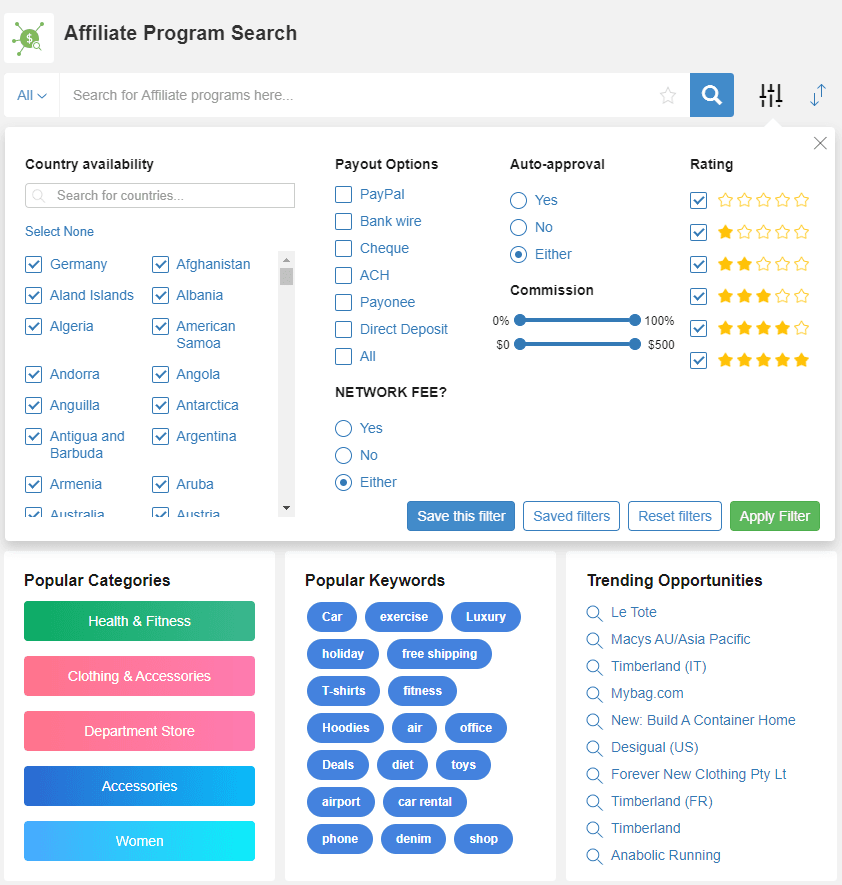





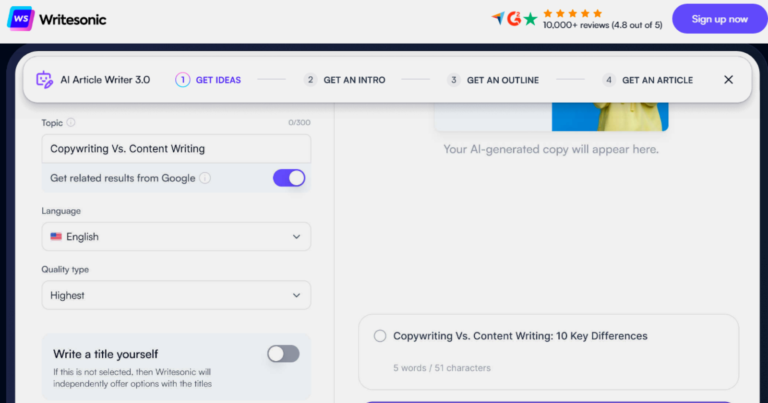
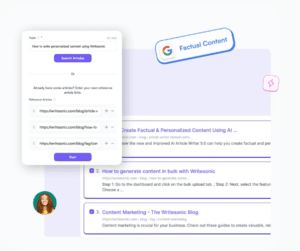
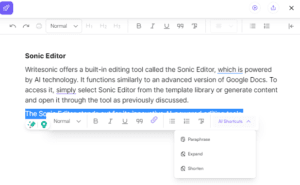
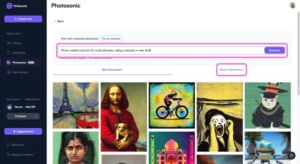

 Writesonic Pros:
Writesonic Pros: Writesonic cons
Writesonic cons


